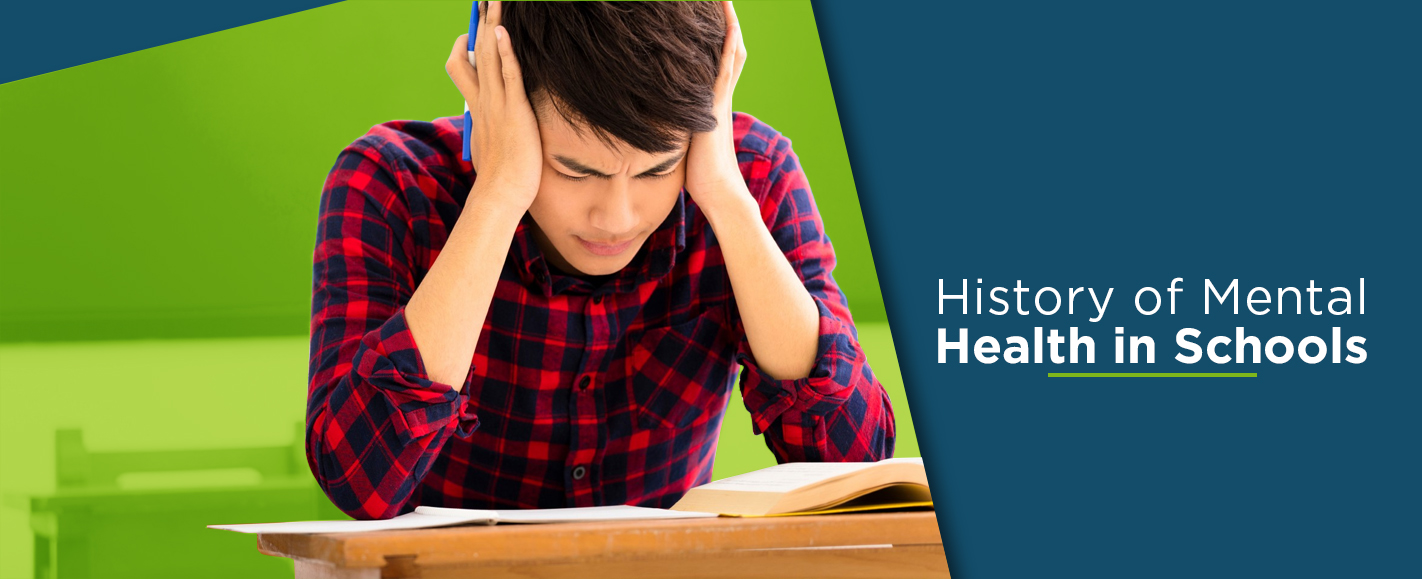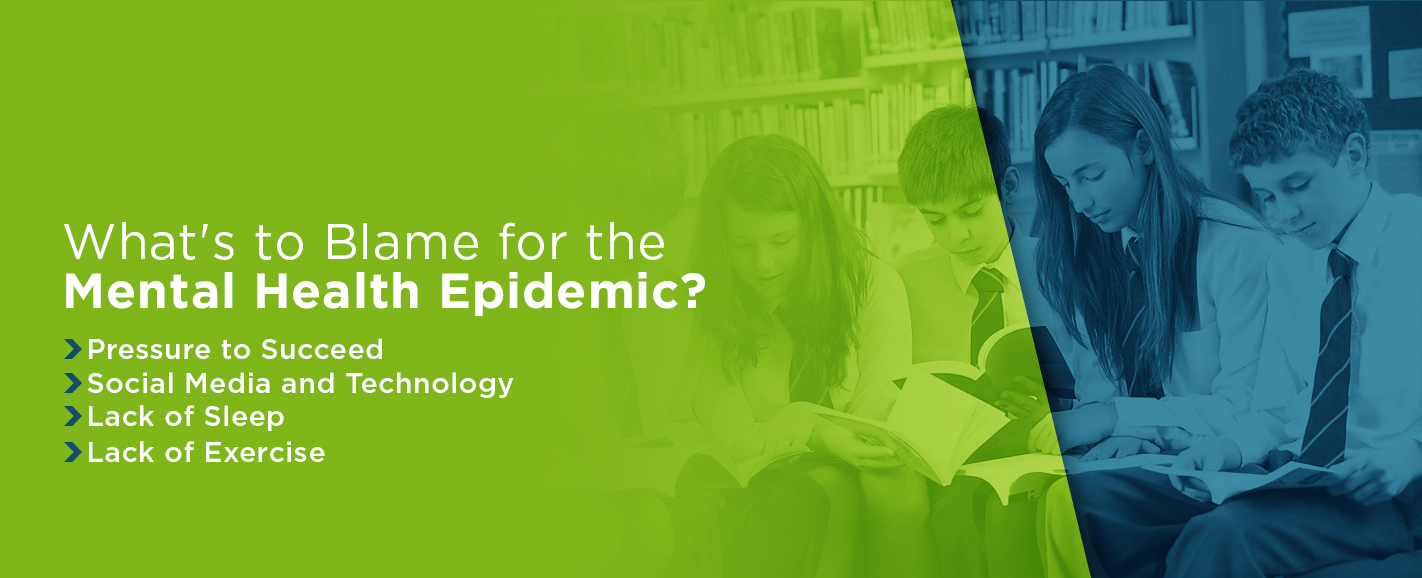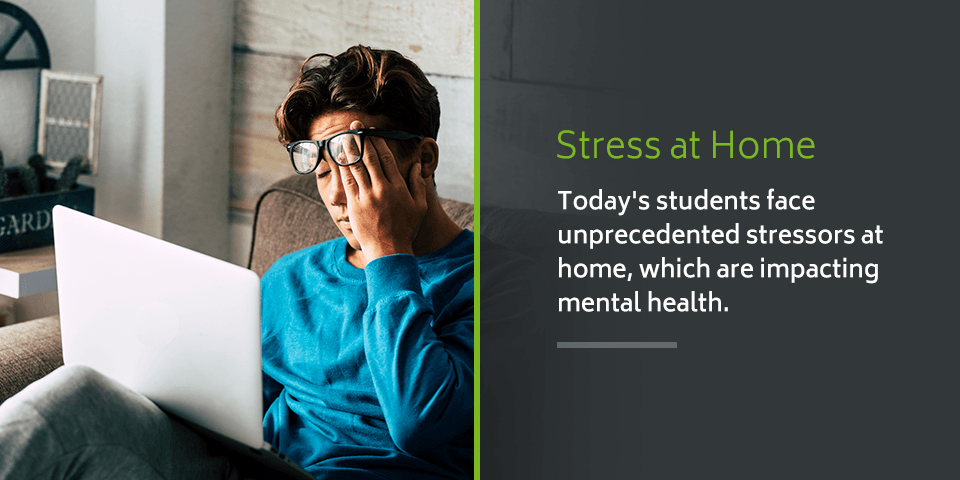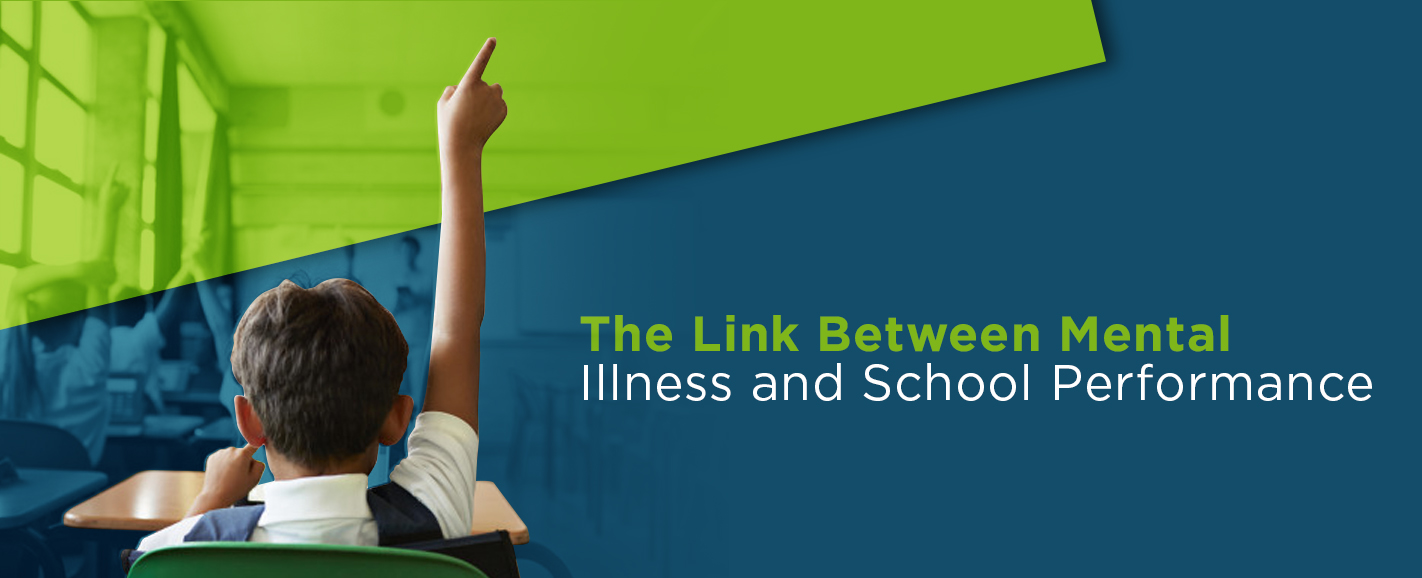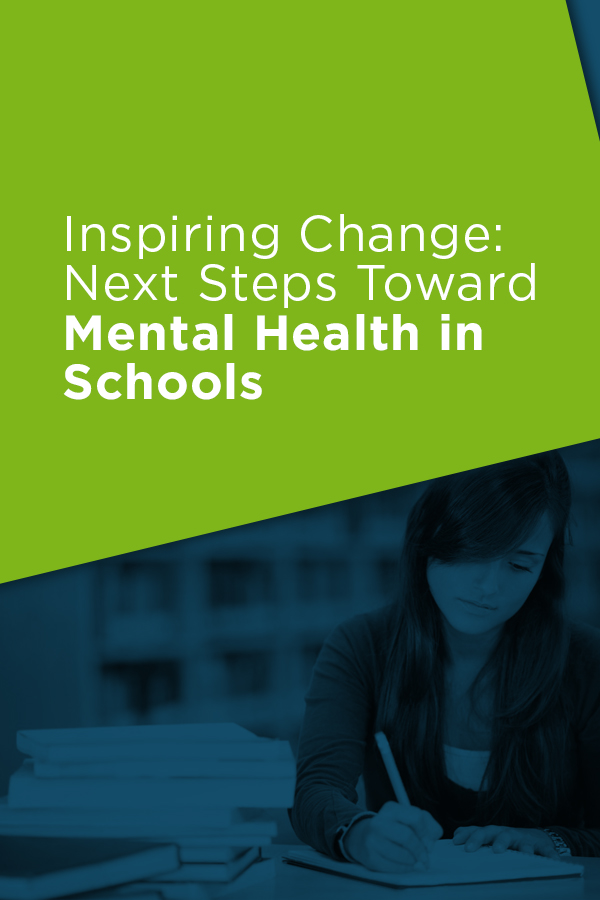Addressing Mental Health Issues in School Leads to Improved Performance
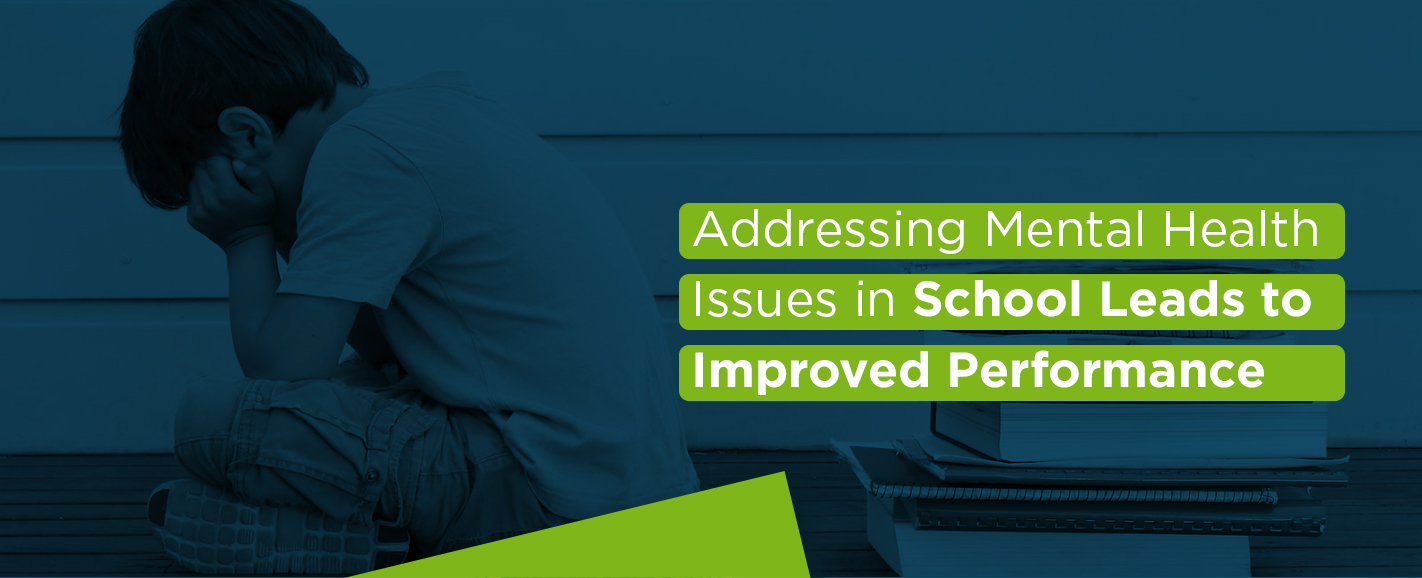
Mental health is declining for America's youth. According to the 2021 State of Mental Health in America report, nearly 10% of youth in the U.S. have severe major depression. Adolescents aged 11 to 17 are particularly struggling with mental health and are more likely to score for moderate to severe depression and anxiety symptoms than any other age group.
Parents, teachers, behavioral health professionals and students need a solution to an epidemic that affects children all over the country. Mental illness impacts school performance and reduces quality of life. Children need hope, and schools are recognizing the importance of addressing mental health issues to help students succeed academically and realize a brighter future.
This article will explore the necessity of school mental health services and how they impact academic performance. We will also investigate solutions to the national mental health crisis among teens and children and suggest ways schools can make a difference. A foundation of mental health will prepare students to embrace their future with optimism.
Table of Contents
- History of Mental Health in Schools
- What's to Blame for the Mental Health Epidemic?
- Signs of Mental Health Problems in Students
- The Link Between Mental Illness and School Performance
- Inspiring Change: Next Steps Toward Mental Health in Schools
History of Mental Health in Schools
Educators and psychologists have recognized a need for mental health care in schools for over a century. Here's a look at the early days of mental health services in schools and how they have evolved.
1. The Early 1900s
During the Progressive Era, many changes were taking place in American school systems. Schools increased the number of days in a school year, and enrollment numbers climbed. With more students attending school, teachers recognized a higher demand for addressing discipline problems. Some reformers saw mental health services as a way to resolve behavioral and academic issues. School counseling also became a profession during this time.
In 1909, Clifford Beers, William James and Adolf Meyer created the National Committee for Mental Hygiene, now known as Mental Health America. The committee aimed to improve attitudes toward mental illness, and they worked to prevent and treat mental health issues.
2. The '50s and '60s
During the mid-20th century, the public became more concerned about a lack of care for the mentally ill, which led to the Community Mental Health Act (CMHA) of 1963. CMHA helped construct community health centers and promote deinstitutionalization. During this time, school counselors focused on personality issues and human development in addition to addressing vocational goals and became known as guidance counselors. The employment of guidance counselors drastically increased, and behavioral disorders became a substantial field of research and training.
3. The Late 20th Century
During the '80s and '90s, legislators passed several acts to promote mental health in communities and schools, which led to some notable milestones.
- 1986: In 1986, Congress passed the State Comprehensive Mental Health Services Plan Act to promote community care and integrate mental and physical health with education and social services for children with emotional disturbances.
- 1990: In 1990, Congress passed the Americans with Disabilities Act to protect mentally and physically disabled individuals from discrimination.
- 1992: In 1992, the legislation mandated the Children's Mental Health Initiative to help children and families access mental health services through a team of counselors, teachers, friends and others involved with the family.
- 1994: In 1994, the National Agenda to Improve Results for Children and Youth with Serious Emotional Disturbance promoted prevention and intervention about mental health issues, which eventually led to training and research in the rest of the decade.
- 1996: In 1996, Congress passed the Mental Health Parity Act to help bring equity to health insurance for mental health care.
Also, the Centers for Disease Control and Prevention identified youth violence and suicide as public health issues during this time.
4. The Present
Today's school systems face unprecedented challenges, such as the lasting impact the COVID-19 pandemic left on students. Schools need ways to address the growing rates of depression, anxiety and suicide among youth. According to the CDC, the suicide rate for people aged 10 to 24 increased 57.4% from 2007 to 2018. Mental Health America reports that suicide ideation is highest among youth, and over 77,000 adolescents frequently thought about suicide from January to September 2020.
As a result of increasing suicide rates and ideation, schools recognize the need to provide mental health education and psychological services. Many states have increased funding for school counseling and have made psychologists part of the school resources. Some states, such as Virginia, New York, New Jersey and Florida, mandate mental health education in their curricula. The goal is to educate children about mental health issues and teach them how to recognize symptoms in themselves and their friends before a crisis or tragedy occurs.
What's to Blame for the Mental Health Epidemic?
Mental health professionals naturally want to get to the root of the problem and figure out the cause for increasing rates of students' mental health problems. Since anxiety and depression impact school performance, many parents may worry about their children's future. While mental health problems can have many different causes, here are five factors contributing to the mental health epidemic and poor academic performance.
1. Pressure to Succeed
The adolescent brain is not mature enough to make long-term decisions. Understandably, teens may feel overwhelmed when asked to choose a career path or decide what college they want to attend. Many times, parents and teachers place an enormous burden on teenagers to perform beyond their capabilities. Teens feel the need to meet unrealistic expectations set by parents, schools and social media, contributing to anxiety and depression.
2. Social Media and Technology
Students spend far too much time in front of a screen every day. According to a survey released by ParentsTogether, almost half of the respondents' children spend more than six hours a day online, and 85% of parents worry about their child's excessive use of games, applications and social media.
Screen time has replaced time spent with friends in the real world or playing sports outdoors. Teens also use social media sites to post anonymous remarks about peers, which can be devastating to an adolescent and lead to self-esteem and relationship issues. It seems technology is adversely affecting emotional development.
An example of social media's impact on a teenager's mental health is this University of British Columbia study. According to this research, teens who got under two hours a day of recreational screen time experienced greater life satisfaction and optimism and fewer anxiety and depression symptoms. When they participated in extracurricular activities such as playing sports and creating art, they enjoyed improved mental health overall. By contrast, longer screen time linked with less life satisfaction, lower optimism and higher depression and anxiety levels.
3. Lack of Sleep
Many students do not get enough sleep, which affects their mental health and ability to perform academically.
For example, according to American Academy of Pediatrics research, only 48% of children ages 6 to 17 get enough sleep on most weeknights. Students may stay up late texting friends or sharing YouTube videos. Others have overfull schedules, limiting the amount of time they have to sleep because they are too busy studying or participating in extracurricular activities. Some students struggle to sleep due to anxiety or other mental health symptoms.
When a student does not get adequate sleep, they may have difficulty regulating their emotions. Sleep deprivation increases the risk of experiencing mental health problems, poor grades, car accidents and suicidal thoughts. A lack of sleep also makes it much more challenging to take tests and think critically through problems.
4. Lack of Exercise
Many schools have tight budgets and may not prioritize physical education. While most states require students to take physical education at some point during their schooling years, only a few require it in every grade.
Students also aren't getting the exercise they need at home. According to the CDC, children and teens should get at least an hour of exercise every day, but it is often not the case. For instance, the American Heart Association reports that only one in four high school students gets the recommended amount of exercise every day.
Physical activity is essential for both physical and mental health. Exercise boosts self-esteem, increases concentration and reduces symptoms of anxiety and depression, all of which help improve academic performance.
5. Stress at Home
Today's students face unprecedented stressors at home, which are impacting mental health. Students have had to adjust to learning from home, being isolated from their friends and coping with uncertainty. They may struggle with loneliness, which can exacerbate or cause depression or anxiety symptoms. Many families are also dealing with financial challenges, tense relationships and the loss of loved ones. More than ever, kids need support from teachers, behavioral health professionals and peers.
Signs of Mental Health Problems in Students
According to the U.S. Department of Health and Human Services, teachers often notice the warning signs of a mental health problem before anyone else. Educators should discuss any signs of cognitive, emotional and behavioral issues with the student's parents and school mental health professionals. Teachers and other school staff should worry about students who:
- Experience sadness or withdrawal from others for over two weeks
- Try to hurt themselves or plan to commit self-harm
- Suddenly experience overwhelming fear
- Express intense fears or worries that interfere with daily activities
- Have a desire to harm others
- Regularly fight with other students or staff
- Exhibit uncontrollable, potentially harmful behavior
- Cause themselves to lose weight by not eating, throwing up or using laxatives
- Have trouble concentrating or sitting still, causing distractions in the classroom
- Use drugs or alcohol repeatedly
- Demonstrate severe mood swings
- Show extreme changes in behavior or personality
Mental health problems are treatable, and early recognition can help students get the care they need. Treatment can also help prevent more severe mental health issues in the future, so the sooner school counselors implement it, the better.
The Link Between Mental Illness and School Performance
Mental health problems affect every aspect of a student's life, including their academic performance. When a student feels depressed or anxious, they might withdraw from peers and neglect their school responsibilities. It may also be challenging for them to concentrate on their studies in school and at home. Here are a few more ways mental health issues impact academic achievement.
- Decreases attendance rates: Students with mental health issues may miss school due to feelings of anxiety, fear, hopelessness or other symptoms related to a mental health problem. For example, a 2019 systemic review found an association between anxiety disorders and unexcused absences. The study's researchers suggest that clinicians consider anxiety in children and teens who have poor school attendance.
- Reduces self-confidence: Students who experience mental health issues are more likely to view themselves as less academically competent than their peers. When students don't believe in themselves, they are less likely to put in the effort. Educating students about the effects of mental health can help them change their self-perception. Teachers and counselors can also help students set attainable goals and learn new coping skills to help them move forward in their academic careers.
- Hurts grades: There is a link between mental health issues, low academic achievement and a decreased desire or ability to do homework or attend class. A study published in Social Psychiatry and Psychiatric Epidemiology confirms that mental health problems in childhood and adolescence increase the risk of poor school performance. However, with a supportive in-school network of counselors and educators, students can overcome learning barriers.
- Discourages continuing education: Students with severe mental health issues may be less likely to pursue higher education or stay in school. In this study, researchers interviewed several young adults who dropped out of high school and several college students. The students who dropped out of high school described more mental health problems and more severe issues with their emotional and mental well-being than those who graduated high school and went to college. Students who dropped out of school also described having less social support than the college students.
Inspiring Change: Next Steps Toward Mental Health in Schools
As more schools become aware of the impact of mental health issues, they will push toward prioritizing mental health. There is hope for students who face mental health challenges, and schools play a significant role in helping students succeed despite any obstacles. Here are a few ways schools can promote mental health for current students and future generations.
- Make mental health education necessary: Other schools throughout the country can emulate states that mandate mental health education and make it part of the curriculum. Educating students about mental health can end stigmas and encourage students to get the help they need. Students may feel less isolated when they learn the truth about mental health issues.
- Get psychologists and psychiatrists involved: Many times, students can't make it to appointments outside school. However, if a psychiatrist visits the school monthly, students can get what they need without worrying about transportation. Kids are already attending school anyway, so it makes sense to offer mental health services where they spend the most time.
- Create an environment free of stigma: Schools can develop a mission to create an environment that promotes well-being and does not stigmatize mental health issues. Reducing the stigma attached to mental health issues benefits both students and teachers.
- Offer mental health screening: Schools might use mental health screening to identify students with mental health issues. One standard screening test is the Columbia-Suicide Severity Rating Scale (C-SSRS), which can accurately identify students at risk of suicide. As an example, Tennessee uses C-SSRS screening in addition to their Youth Screen program.
- Make exercise part of the day: Schools need to set aside an hour a day for exercise. Physical activity helps students relieve stress, and it boosts mood and improves concentration.
- Let teens sleep: Many schools start too early. According to the CDC, most middle and high schools begin before 8:30 a.m. In contrast, the American Academy of Pediatrics says schools should begin at 8:30 a.m. or later so that students can get the recommended eight to 10 hours of sleep per night. Schools should modify their policies to allow students to sleep more, which will result in improved mental and physical health.
- Offer mindfulness training: Teaching mindfulness exercises can help students live in the present and relieve stress. It can be as simple as taking a few minutes to breathe deeply and focus on the moment. Mindfulness also helps increase attention spans.
- Encourage technology breaks: Teachers can help students break free from social media pressure and spend time exploring their unique qualities instead. They can set up spaces or times for tech-free breaks and encourage students to pursue their interests, learn about themselves and value themselves beyond their image.
- Provide grief support: Many of today's students are grieving. They may be mourning the death of a loved one or grieving milestones they didn't get to celebrate due to circumstances surrounding the COVID-19 pandemic. Grieving children might experience symptoms of anxiety, depression or increased fear of death. Grief does not necessarily get easier for children as time goes on, and they need ongoing support. Schools should provide various options for students to express grief and talk about their feelings. Teachers, school counselors, school psychologists and others involved in a student's well-being can share strategies to help students heal.
- Offer virtual support: Many schools used the COVID-19 pandemic as an opportunity to transition into more consistent remote learning. Students still need encouragement from school counselors and therapists as they attend classes virtually. School counselors can share helpful resources online and offer virtual office hours to help students explore careers, provide emotional support and monitor progress. Likewise, school psychologists might connect with students through a telehealth platform to continue providing care.
Try ICANotes Today
Behavioral health professionals, teachers and parents can work together to increase mental health awareness among students. When students know they have a support system close by, they may feel more inclined to reach out for help when they need it. When students seek assistance in addressing mental health issues, they will be on the path to improved academic performance.
If you work in the behavioral health field, your services are in high demand around the country. You can streamline your processes and use your time more efficiently when you use tools that improve workflow. ICANotes is electronic health record software designed especially for the behavioral health field. ICANotes simplifies patient documentation, so you have more time to spend with clients instead of completing paperwork. To learn more about using ICANotes in your practice, contact us today or start your free trial.
Related Posts
The Importance of the Senate Expanding Training for School Mental Health Professionals
Ways Exercise Can Improve Mental Health
Tips for Improving Mental Health in Young Adults
Dispelling 8 Common Myths About Mental Illness
How Technology Affects Mental Health Therapy
What Are Social Determinants of Health (SDOH) and Why Are They Important?
Understanding the Mental Health Crisis Facing Young People
Sources:
https://www.educationdive.com/news/addressing-mental-health-issues-critical-to-boosting-academic-success/529381/
https://www.nami.org/NAMI/media/NAMI-Media/Infographics/Children-MH-Facts-NAMI.pdf
https://www.johnshopkinshealthreview.com/issues/fall-winter-2017/articles/the-rise-of-teen-depression
https://www.researchgate.net/publication/226535892_History_of_School-Based_Mental_Health_Services_in_the_United_States
http://www.mentalhealthamerica.net/our-history
https://www.pewtrusts.org/en/research-and-analysis/blogs/stateline/2018/06/15/many-recommend-teaching-mental-health-in-schools-now-two-states-will-require-it
https://www.cdc.gov/mmwr/volumes/66/wr/mm6630a6.htm
https://www.newportacademy.com/resources/mental-health/adolescent-depression-in-schools/
https://www.businessinsider.com/undercover-high-teen-depression-social-media-2018-2
https://www.wpr.org/schools-cut-back-physical-education-childhood-obesity-remains-high
https://www.shapeamerica.org//advocacy/son/2016/upload/Shape-of-the-Nation-2016_web.pdf
https://www.shapeamerica.org/
https://www.jedcampus.org/
http://www.jedcampus.org/wp-content/uploads/2018/01/HiEd_WP_020717_StudentRetentionWP.pdf
https://www.flgov.com/
https://www.flgov.com/wp-content/uploads/childadvocacy/mental-health-and-academic-achievement-2-24-12.pdf
https://www.npr.org/sections/ed/2016/09/20/459843929/heres-how-schools-can-support-students-mental-health
https://www.cdc.gov/mmwr/preview/mmwrhtml/mm6430a1.htm
https://www.eeoc.gov/eeoc/history/35th/1990s/ada.html
https://www.cdc.gov/mmwr/volumes/66/wr/mm6630a6.htm
https://kaiserfamilyfoundation.files.wordpress.com/2013/04/8010.pdf
https://www.cdc.gov/healthyschools/physicalactivity/guidelines.htm
Last updated April 13, 2021

